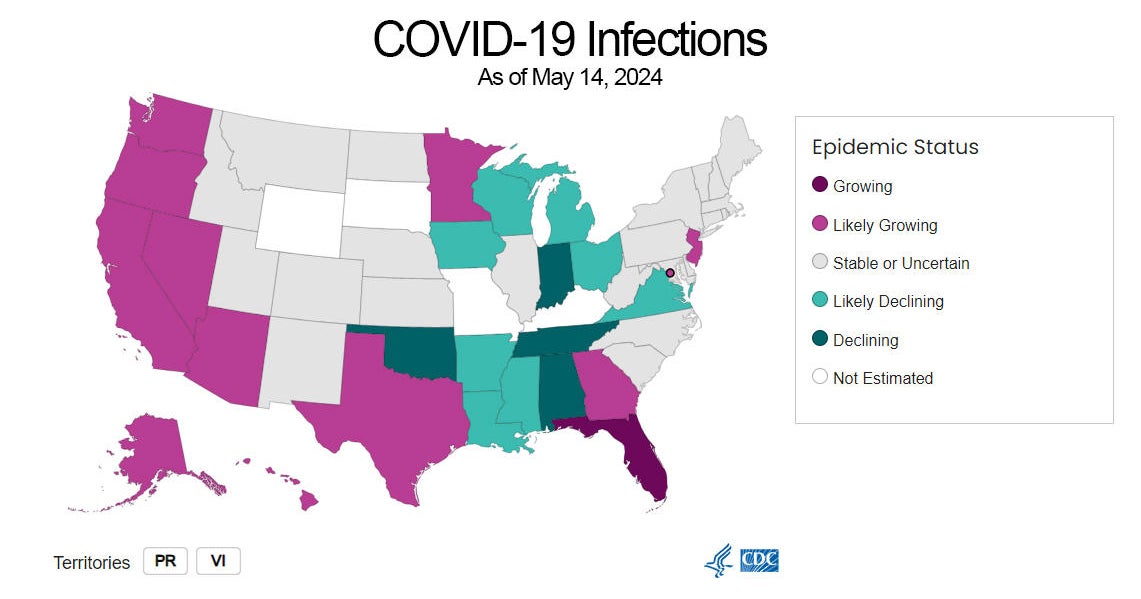“They were just beautiful,” she said. “Waverly was our little sunshine. She was very verbal. She loved singing and books. Even after she lost her ability to use expressive language, she had memorized so many books and songs that she used that as her communication language.”
Waverly was 3 when her parents learned the reason for her delayed motor skills. McNeil said her daughter failed a hearing test and, after more testing, a doctor diagnosed her with the condition. Oliver, who was already born at the time, later received the same diagnosis.
“He was much more active and physical than Waverly, in that he was able to run, ride a scooter and ride a bike,” McNeil said. “But he never spoke much. He was our gentle giant. Once he warmed up to you, he was going to be your buddy for a lifetime.”
There are different ways to describe Sanfilippo syndrome. There’s the medical way: an inherited disorder that leaves the body unable to break down chains of sugar molecules, causing a buildup that damages organs, including the brain. And there’s the matter-of-fact way: a cruel condition that takes more and more from children as they get older and leads to an early death. There is no cure, and many children don’t survive past their teenage years. It affects 1 in every 70,000 births.
A volatile clock ticks over each child with Sanfilippo syndrome, and that clock is why families across the country right now are desperate for the U.S. Food and Drug Administration to grant accelerated approval to treatments. Families and biotech company heads say that while there is no cure, some treatments have shown promise, and children with the condition need access to them now to have a chance at prolonging the quality and the length of their lives.
One mother who started a nonprofit, then a biotech company, in hopes of finding a way to help her son and other children with the condition, said that if the FDA does not grant treatments accelerated approval, funding for research will fall away and progress will be lost.
Already, her son is older than other children who have died of the condition.
“I’m at a major crossroads,” Jill Wood told me. “My son is 15 years old. This is the time when children start to severely regress and lose all their abilities. Do I stick this out for the next generation, or do I go home and hang out with my son now? … I just want to know if I can do this. Otherwise, I need to be with him. I need to put my family first. The guilt gets worse and worse every year that he gets older.”
Wood described how the condition has affected her son, Jonah. He can speak but not in complete sentences. He enjoys being around people, but he doesn’t know not to run into the street. He loves TV, but the family no longer keeps any in the house because he grew aggressive every time someone turned one off. At one point, Wood shaved her head because he would pull her hair.
Her son no longer does that, she said, but now she’s waiting to see what abilities he might lose. Many children with the condition lose their abilities to speak, eat and even sleep at night.
Jonah was diagnosed with the condition before the age of 2. Soon after, in 2010, Wood and her husband, Jeremy Weishaar, created the nonprofit organization Jonah’s Just Begun. Then in 2012, they and other parents of children with Sanfilippo syndrome, along with researchers, founded the biotech company Phoenix Nest. The company, which has received grants from the National Institutes of Health, has been working on treatments for two of the rarer subtypes of the condition.
Wood said she has spoken directly to FDA officials about the need to funnel treatments through the accelerated approval program, and she has joined other families and companies that have done so. But so far, she said, they have not seen the FDA take that action.
“So, we’re stuck,” she said. “We are so stuck, and it brings me to tears.”
I first started writing about children with rare diseases after meeting a young woman with two “ultrarare” conditions at the Children’s Inn at NIH. I told you about her in an earlier column. I also told you about a girl named Autumn whose rare condition caused her to have a facial tumor and a family with three children whose rare condition threatened to claim their lives. The populations that make up the communities surrounding these rare conditions is small by nature, so it’s easy for them to go unheard. I’m sharing with you what people in the Sanfilippo community have been saying, because the stakes are too high for their voices to remain too small.
The FDA describes its Accelerated Approval Program as a way to “to allow for earlier approval of drugs that treat serious conditions, and fill an unmet medical need based on a surrogate endpoint. A surrogate endpoint is a marker, such as a laboratory measurement, radiographic image, physical sign or other measure that is thought to predict clinical benefit but is not itself a measure of clinical benefit. The use of a surrogate endpoint can considerably shorten the time required prior to receiving FDA approval.”
Since that approval pathway was created in 1992, the FDA says on its website, “many drugs that treat life-threatening diseases have successfully been brought to market this way and have made a significant impact on disease course.” It points to HIV/AIDS and cancer treatments.
Emil Kakkis, the founder of Ultragenyx Pharmaceutical, a developer of treatments for rare diseases, wrote an article applauding the FDA for granting accelerated approval for a treatment of Alzheimer’s. In that piece, he noted how, like Alzheimer’s, rare diseases such as Sanfilippo syndrome “make it particularly challenging to apply the normal rules of drug development.”
When I spoke to Kakkis, he said children with the condition have a small window to get diagnosed and start receiving treatments. He also said that creating those treatments comes at a high cost and that he has heard from two companies who asked him to take on treatment projects they couldn’t continue funding.
“If the FDA doesn’t change what they’re doing, all these treatments will be gone and Sanfilippo syndrome won’t get a single treatment approved,” he said. “To me, it’s just an incredible tragedy to watch these treatments disappear for what I would call red-tape regulatory reasons.”
McNeil, who is now a pediatric social worker and grief therapist, knows what it feels to have no way of slowing the condition’s progression. It’s too late for her children to benefit from whatever treatments are developed, but she has joined the call for accelerated approval because she hopes other children get that chance.
“Our end goal isn’t naive in that we think there’s going to be a comprehensive cure,” she said. Those treatments may come with risks, but they may also allow children to stay mobile longer, avoid swallowing issues longer and possibly live longer. That’s a chance she would have wanted to give her children, she said. “When you’re left with a lot of hopelessness and a future that you know is an ultimate death, you’re willing to roll those dice.”

Rachel Carter is a health and wellness expert dedicated to helping readers lead healthier lives. With a background in nutrition, she offers evidence-based advice on fitness, nutrition, and mental well-being.








